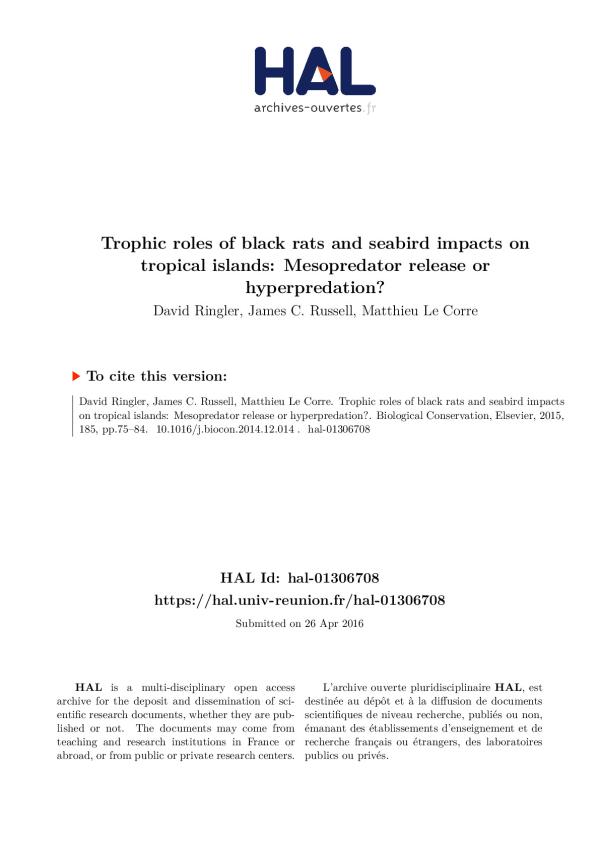Localisation
SPREP LIBRARY
Éditeur
Elsevier
Année de publication:
2015
Lieu de publication
Saint Denis, Reunion
Description physique:
11 p.
Numéro d'appel
[EL]
Type de contenu
Langue
English
Identifiant de dossier:
286
Ancien numéro d'identification PEIN:
80590
Notes générales
Online only
ISSN:
0006-3207
Disponible en ligne
Rubrique(s) thématique(s)
Invasive species - Rat eradication - Oceania
Mesopredator release effect
Hyperpredation process
Seabird conservation
Résumé
Rats contribute to the decline of tropical seabird populations by affecting their breeding success through direct predation of eggs and chicks. When they coexist with other predators, invasive rats may also generate indirect interactions via the changes they impose on the structure of communities and trophic interactions following invasion (hyperpredation process), or when apex predators are eradicated from the ecosystem (mesopredator release effect). Understanding these effects is necessary to implement restoration operations that actually benefit threatened seabird populations. We investigated these processes on two French tropical seabird islands of the western Indian Ocean, Europa and Juan de Nova, where black rats coexist with two different apex predator species (introduced cats and potentially native barn owls). The parallel use of several methods (diet analysis, stable isotopes, seabird monitoring) to identify trophic roles of rats revealed that the direct impact of rats on seabirds was particularly high on Europa where only rats and owls occur, with high consumption of chicks resulting in low breeding success for several seabird species. We also suggested that hyperpredation associated with top-down regulation of cats is occurring on Juan de Nova, although territoriality of cats may buffer this process. Conversely we found evidence that mesopredator release effect is unlikely, irrespective of the apex predator identity. Considering the most likely effects on both islands we provided recommendations on eradication priorities to mitigate the risk of local extinction that seabirds are currently facing.
Espèces:
Localisation
SPREP LIBRARY
Éditeur
Elsevier
Année de publication:
2015
Lieu de publication
Saint Denis, Reunion
Description physique:
11 p.
Numéro d'appel
[EL]
Type de contenu
Langue
English
Identifiant de dossier:
286
Ancien numéro d'identification PEIN:
80590
Notes générales
Online only
Dossier créé: 08-Feb-2016
Dossier modifié: 15-Feb-2022

